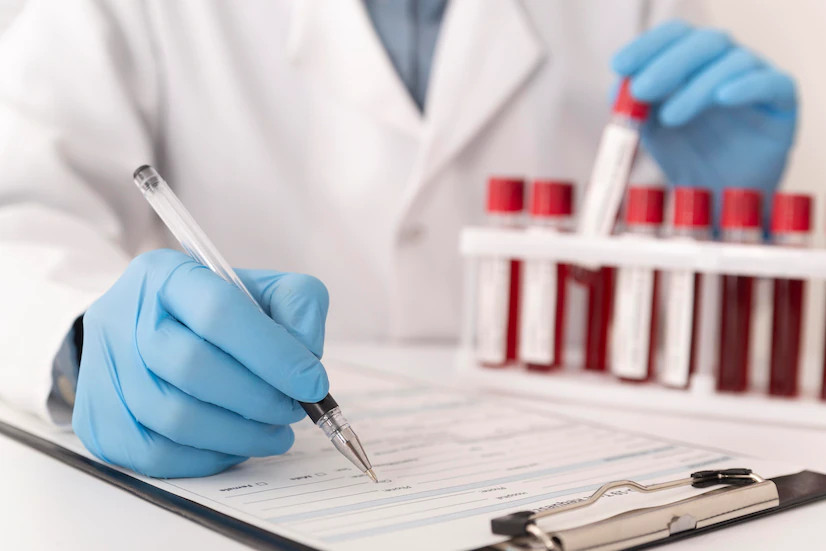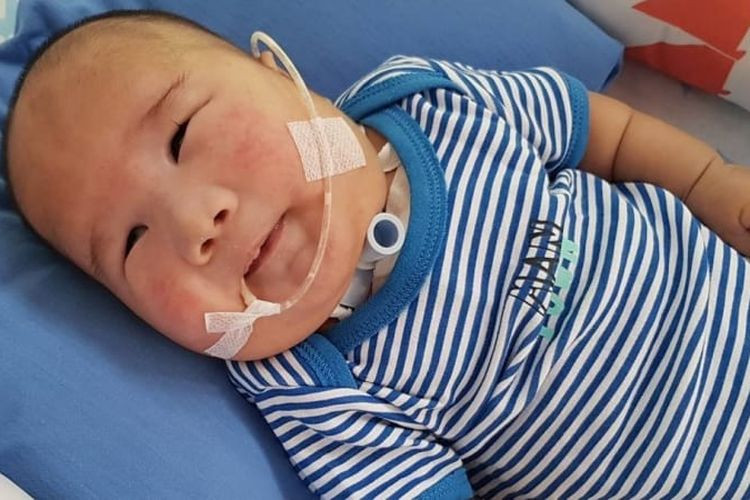Definisi
Lipodistrofi adalah suatu kondisi yang ditandai dengan hilangnya seluruh atau sebagian jaringan adiposa (lemak) yang tidak normal di area tertentu di tubuh. Ada beberapa jenis lipodistrofi, yakni yang bersifat genetik (disebabkan oleh mutasi genetik) atau yang didapat (disebabkan oleh kondisi lain). Jenis lipodistrofi memengaruhi orang secara berbeda dan memiliki beberapa gejala berbeda.
Anda memiliki jaringan adiposa (jaringan lemak) di seluruh tubuh, termasuk di bawah kulit dan di sekitar organ dalam. Jaringan adiposa melayani banyak fungsi penting, termasuk:
- Mengubah kalori menjadi energi
- Memberikan bantalan untuk berbagai bagian tubuh Anda
- Menyediakan isolasi tubuh (menjaga tubuh Anda tetap hangat)
- Melepaskan hormon tertentu, seperti leptin
- Menyederhanakan peradangan
- Kehilangan dan/atau redistribusi lemak tubuh akibat lipodistrofi dapat menyebabkan perubahan signifikan pada penampilan Anda, tetapi juga memengaruhi fungsi metabolisme penting tertentu dalam tubuh Anda. Banyak orang dengan lipodistrofi memiliki diabetes dan kadar kolesterol tidak teratur
Ada beberapa jenis lipodistrofi, yang terbagi menjadi dua kategori utama: genetik dan didapat.
Bentuk genetik dari lipodistrofi meliputi:
- Lipodistrofi umum bawaan (CGL): Lipodistrofi umum bawaan (juga disebut sindrom Berardinelli-Seip) adalah jenis lipodistrofi langka dengan kehilangan lemak yang signifikan dan terkadang hampir total. Kondisi ini disebabkan oleh mutasi (perubahan) genetik yang dibawa sejak lahir. Kondisi ini sering terdiagnosis dalam tahun pertama kehidupan.
- Lipodistrofi parsial familial (FPLD): Lipodistrofi parsial familial juga bersifat genetik (diturunkan). Ini sering didiagnosis di kemudian hari dalam kehidupan seorang anak. Kehilangan lemak terutama memengaruhi kaki dan lengan anak dengan kelebihan lemak di wajah dan lehernya.
Bentuk lipodistrofi yang didapat meliputi:
- Acquired generalized lipodystrophy (AGL): Acquired generalized lipodystrophy (juga disebut sindrom Lawrence) biasanya menyebabkan hilangnya lemak di wajah, leher, lengan, dan kaki.
- Acquired partial lipodystrophy (APL): Acquired partial lipodystrophy (juga disebut sindrom Barraquer-Simons), ditandai dengan hilangnya lemak secara bertahap dari wajah, leher, lengan, dan dada selama masa kanak-kanak. Beberapa orang dengan APL mungkin membawa lemak berlebih di sekitar perut, kaki, atau bokong. APL sering dikaitkan dengan kondisi autoimun.
- High active antiretroviral therapy (HAART) induced lipodystrophy (LD-HIV): Bentuk lipodistrofi ini terjadi pada orang dengan human immunodeficiency virus (HIV) setelah menerima terapi antiretroviral yang dikenal sebagai ARV yang mengandung protease inhibitor HIV-1.
- Lipodistrofi Lokal: Bentuk lipodistrofi ini hanya menyebabkan hilangnya lemak di area kecil tubuh Anda. Ini dapat terjadi di tempat umum untuk injeksi obat (seperti suntikan insulin). Lipodistrofi lokal tampak seperti lesung pipit atau kawah, kulit di atasnya biasanya tidak terpengaruh.
Penyebab
Lipodistrofi genetik disebabkan oleh mutasi genetik. Mutasi genetik adalah perubahan urutan DNA. Urutan DNA memberi sel informasi yang mereka butuhkan untuk menjalankan fungsinya. Jika bagian dari urutan DNA tidak lengkap atau rusak, Anda mungkin mengalami gejala kondisi genetik, salah satunya adalah lipodistrofi.
Sedangkan untuk lipodistrofi yang didapat, disebabkan oleh obat-obatan, reaksi autoimun atau memiliki penyebab yang tidak diketahui (idiopatik). Sementara lipodistrofi yang didapat tidak memiliki dasar genetik langsung. Beberapa peneliti berpikir bahwa sebagian orang mungkin memiliki kecenderungan genetik untuk mengembangkan bentuk tertentu dari lipodistrofi yang didapat.
Faktor Risiko
Sebagian besar bentuk lipodistrofi dimulai pada masa kanak-kanak, tetapi bentuk lipodistrofi didapat juga dapat berkembang pada orang dewasa. Bentuk lipodistrofi didapat lebih sering terjadi pada wanita dibandingkan pria, kecuali lipodistrofi yang diinduksi oleh terapi ARV.
Gejala
Terdapat banyak jenis lipodistrofi, maka gejalanya sangat bervariasi. Gejala lipodistrofi yang paling umum adalah penurunan jumlah lemak yang nyata dan konsisten di beberapa bagian tubuh Anda dengan jumlah lemak yang normal atau relatif berlebih di bagian lain tubuh.
Beberapa jenis lipodistrofi, terutama lipodistrofi sebagian, sulit dideteksi. Oleh sebab itu, penting untuk menemui dokter agar memudahkan diagnosis.
Diagnosis
Diagnosis dapat ditegakkan oleh dokter dengan melakukan anamnesis, pemeriksaan fisik, dan pemeriksaan penunjang.
Anamnesis
Dokter akan melakukan anamnesis dengan menanyakan keluhan utama pasien, keluhan penyerta, sejak kapan keluhan tersebut muncul, riwayat penyakit sebelumnya, riwayat pengobatan, riwayat penyakit keluarga, dan pola hidup.
Pemeriksaan Fisik
Kemudian dokter melakukan pemeriksaan fisik yang dimulai dengan memeriksa tanda vital (tekanan darah, suhu tubuh, laju napas, dan nadi). Selanjutnya dokter juga memeriksa dari ujung kepala hingga ujung kaki.
Pemeriksaan Penunjang
Dilanjutkan dengan pemeriksaan penunjang. Pemeriksaan penunjang dapat berupa pemeriksaan MRI, pemeriksaan panel metabolik menyeluruh untuk melihat keseimbangan kimia dalam tubuh terutama pada kadar glukosa dan enzim hati, pemeriksaan genetik, pemeriksaan leptin, pemeriksaan kadar kolesterol, dan biopsi ginjal bila diperlukan.
Tata Laksana
Perawatan dan pengelolaan lipodistrofi bergantung pada jenis lipodistrofi dan kondisi kesehatan pasien, seperti diabetes atau kadar kolesterol abnormal.
Terapi manajemen umum untuk lipodistrofi meliputi:
- Obat pengganti leptin: Dokter mungkin meresepkan versi sintetis dari hormon lemak, leptin. Penderita lipodistrofi sering kekurangan leptin. Hormon ini membantu mengontrol proses metabolisme tubuh dan dapat membantu menurunkan kadar kolesterol dan trigliserida yang tinggi.
- Perawatan diabetes dan resistensi insulin: Jika Anda memiliki resistensi insulin dan/atau diabetes karena lipodistrofi, maka dokter mungkin akan meresepkan obat oral untuk membantu mengobatinya, seperti pioglitazone metformin, sulfonilurea, atau thiazolidinediones.
- Mengatur kadar trigliserida dan kolesterol: Obat-obatan oral yang disebutkan di atas yang dapat membantu mengobati diabetes seringkali juga dapat membantu mengatur kadar kolesterol.
- Operasi dan prosedur kosmetik: Orang dengan lipodistrofi di area yang sensitif secara kosmetik, seperti wajah, dada, atau daerah kemaluan, dapat menjalani operasi kosmetik untuk membantu penampilan dan kepercayaan diri mereka. Ahli bedah plastik dapat menggunakan transplantasi jaringan
Komplikasi
Lipodistrofi menyebabkan masalah metabolisme. Masalah metabolisme ini meliputi diabetes, hipertrigliseridemia berat, dan akumulasi lemak pada organ ektopik seperti hati yang dapat menyebabkan komplikasi organ.
Pencegahan
Dalam kebanyakan kasus, lipodistrofi tidak dapat dicegah. Anda tidak dapat mencegah bentuk genetik lipodistrofi karena merupakan hasil mutasi genetik yang diwariskan. Untuk memahami risiko memiliki anak dengan kondisi genetik, bicarakan dengan dokter mengenai pengujian genetik jika Anda berencana untuk hamil.
Bentuk lipodistrofi yang didapat sering dipicu oleh infeksi atau kondisi autoimun. Beberapa jenis infeksi, seperti cacar air dan batuk rejan (pertusis), dapat dicegah dengan vaksinasi, namun infeksi lain yang berhubungan dengan lipodistrofi yang didapat dan kondisi autoimun tidak dapat dicegah.
Kapan Harus ke Dokter?
Bila Anda melihat penurunan lemak yang konsisten di area tertentu pada tubuh Anda atau anak Anda dan/atau peningkatan lemak di area tertentu, bicarakan dengan penyedia layanan kesehatan Anda.
Jika Anda atau anak Anda telah didiagnosis menderita lipodistrofi, Anda perlu waspada dan menemui tim kesehatan secara teratur untuk memastikan perawatan yang cocok untuk Anda.
Mau tahu informasi seputar penyakit lainnya? Cek di sini, ya!
- dr. Monica Salim
B. Akinci, M. Sahinoz, E. Oral (2018). Lipodystrophy Syndromes: Presentation and Treatment. Retrieved 17 April 2023, from https://www.ncbi.nlm.nih.gov/books/NBK513130/#_NBK513130_pubdet_
Medscape - Generalized Lipodystrophy (2023). Retrieved 17 April 2023, from https://emedicine.medscape.com/article/128355-overview
WebMD - Acquired Lipodystrophy (2022). Retrieved 17 April 2023, from https://www.webmd.com/diabetes/acquired-lipodystrophy











